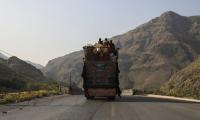quality of life for the deprived sections of society.
The idea here is that an institutional framework be created so that banks in the private and public sectors combined with a credit fund created by the government could give small loans to poor families by directly placing this credit in their name, in new large corporations set up through public-private partnership and managed by committed high quality professionals. The loans can be repaid from the dividends generated in the first few years. Essentially this is not a new idea. It has been tried with great success, although in a slightly different institutional form, in other South Asian countries.
Let us take just two examples of large organisations of the poor for the production of goods and services. A few decades ago Dr Kurien set up a women-based milk cooperative, called AMUL in a single village in India, Today, with about seven million women members, AMUL is the largest producer and exporter of milk and milk products in the world in terms of revenues earned.
Another example is Grameen Telecom initiated by Nobel Prize winner Dr Yunus in Bangladesh. The company started by giving mobile telephones to poor women in remote villages at a nominal rent so that the women could earn a livelihood by selling a telephone service to poor villagers who wanted to speak with relatives working abroad. The village women renting in the mobile phones were made shareholders. In time Grameen Telecom became the largest telecommunications company in Bangladesh owned by millions of poor women.
Dr Yunus later set up a company again owned by the poor for helping to overcome malnutrition in Bangladesh. It conducted state of the art research to produce and sell a low priced yogurt that in a single helping could fulfil one day’s nutritional requirements of a child. In his latest book Dr Yunus calls such enterprises “Social Business”. He suggests other social businesses which could for example develop and sell renewable energy systems at low prices for poor communities who do not have access to cheap energy; and recycling on a commercial basis of garbage, sewage and waste products that would otherwise cause pollution, in poor neighbourhoods.
Given the experience of a variety of different institutional forms of production organisations of the poor and for the poor in South Asia, it is time to make an attempt in Pakistan. Here professionally managed large corporations could be registered as public limited companies with equity owned by the poor and initially financed through loans. These businesses could develop and produce goods and services for the poor.
Consider the example of milk and dairy products. With over Rs 177 billion worth of milk being produced in Pakistan annually, milk is Pakistan’s largest product in the agriculture sector. Unlike agriculture crops, milk production can be increased sharply rather quickly. Demonstrable experience in the field has shown that milk yield per animal can be doubled within two years.
A large People’s Milk Corporation owned by the poor could help to achieve this objective through an institutional framework for training poor peasants in scientific feeding and breeding. The logistics could also be established for collecting milk from the farm door in refrigerated vehicles, processing, packaging and domestic marketing as well as exports.
Pakistan lies at the hub of a crescent of milk deficit countries in West Asia, Central Asia and East Asia. The People’s Milk Corporation could make arrangements for refrigerated storage of milk cartons at airports and subsequent airfreight to export markets.
Another initiative could be a Poor Fishermen’s Corporation for the development and export of marine fisheries. Here what is required is efficient institutional support for the new corporation owned by fishermen along Pakistan’s coastal regions in Balochistan and Sindh. Currently the expansion of the export of marine fisheries is constrained because the storage facilities during transportation do not meet international standards.
At the moment alternate layers of fish and hard sharp edged ice are placed in containers on boats. Under the weight of the upper layers of fish and sharp edged ice, fish in the lower layers are crushed and the resultant bleeding cause putrefaction. To avoid this it is necessary to enable the fishermen to invest in shelves for safe layered storage of fish and fibreglass covers to maintain the international standard of temperature at minus 7 degrees centigrade during transportation.
A considerable export potential of marine fisheries is awaiting utilisation if the proposed corporation for poor fishermen and the required management systems could be established.
Such initiatives in the milk and marine fisheries sectors could not only have a significant impact on the incomes of the poor but also increase exports and overall GDP growth. Thus the poor could play a key role in generating equitable, export-led growth.
The writer is a professor of economics at the Forman Christian College University, Lahore.
Email: akmalhussain@fccollege. edu.pk
Critics argue that strategy is vague, but closer look indicates strategic alignment with global trends and national...
To defeat it, we must distrust bot-driven narratives, to defeat it, we must verify sources before believing or sharing
Too often in emerging markets, digital innovation is treated as standalone goal, with risk relegated to afterthought
As in Pakistan lawfare’s impact and prevalence are increasing, situation is turning murkier
Number of traditions are associated with Eid, such as new clothes and giving and receiving of cash gifts as Eidi
Internationally, there have been misleading theories propounded about so-called slowing of Chinese economy







